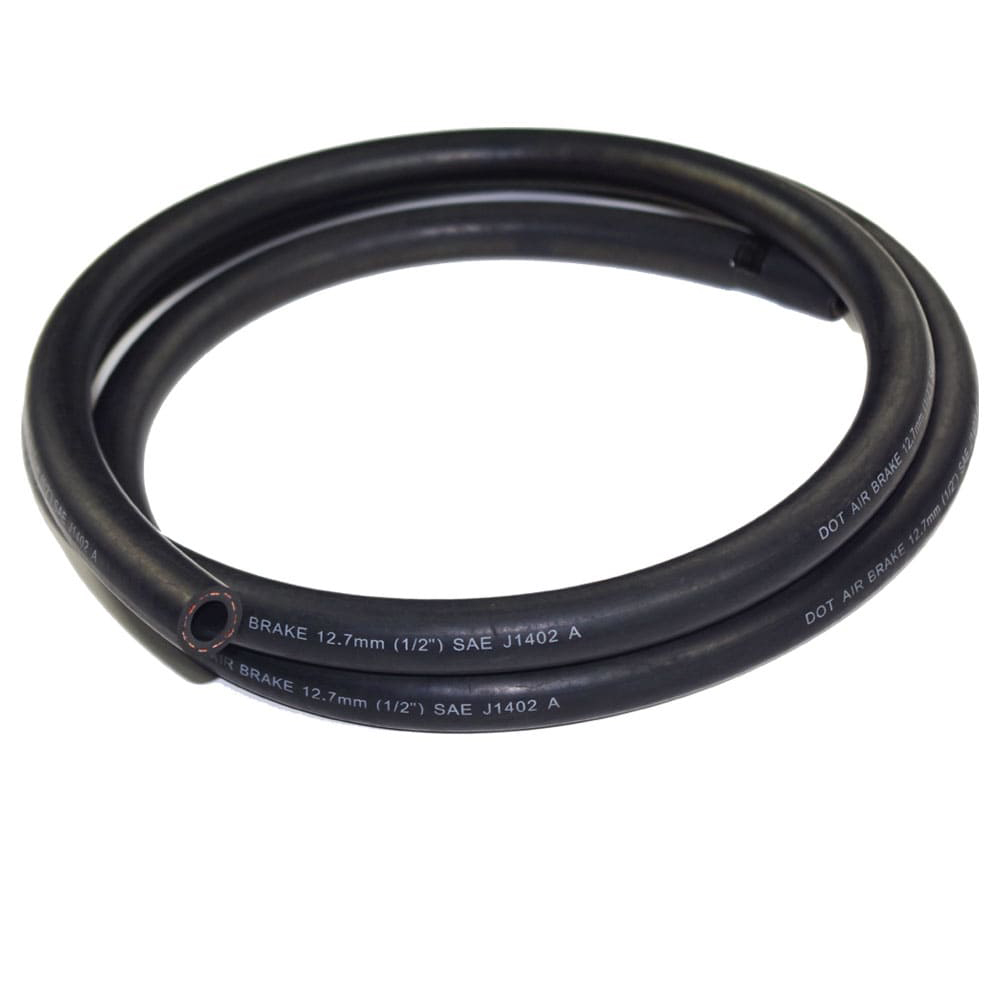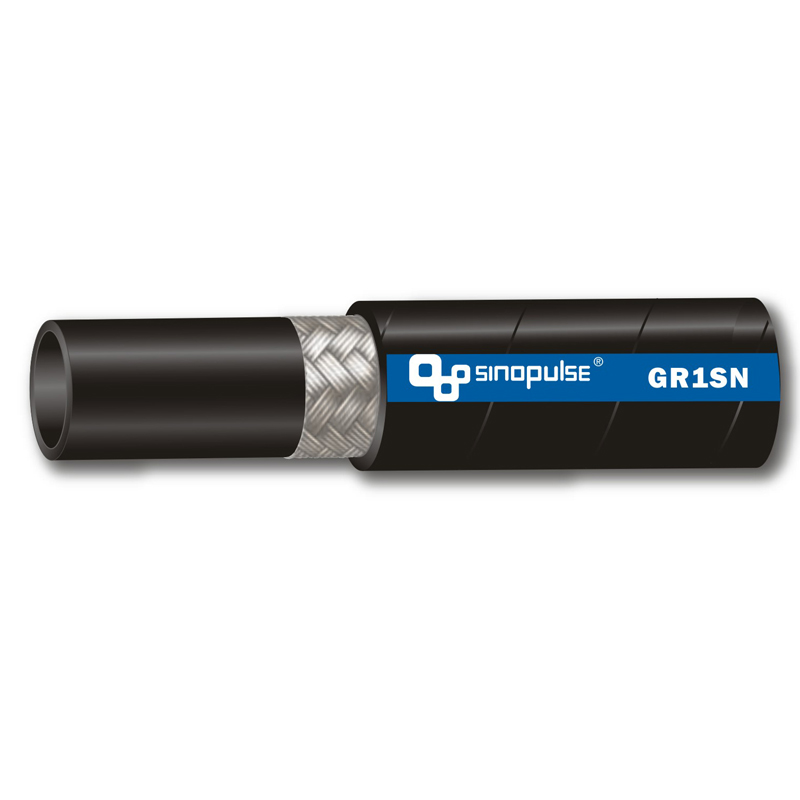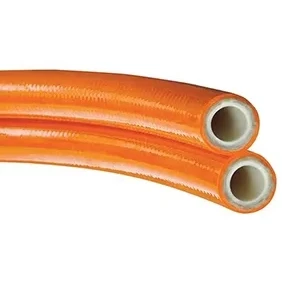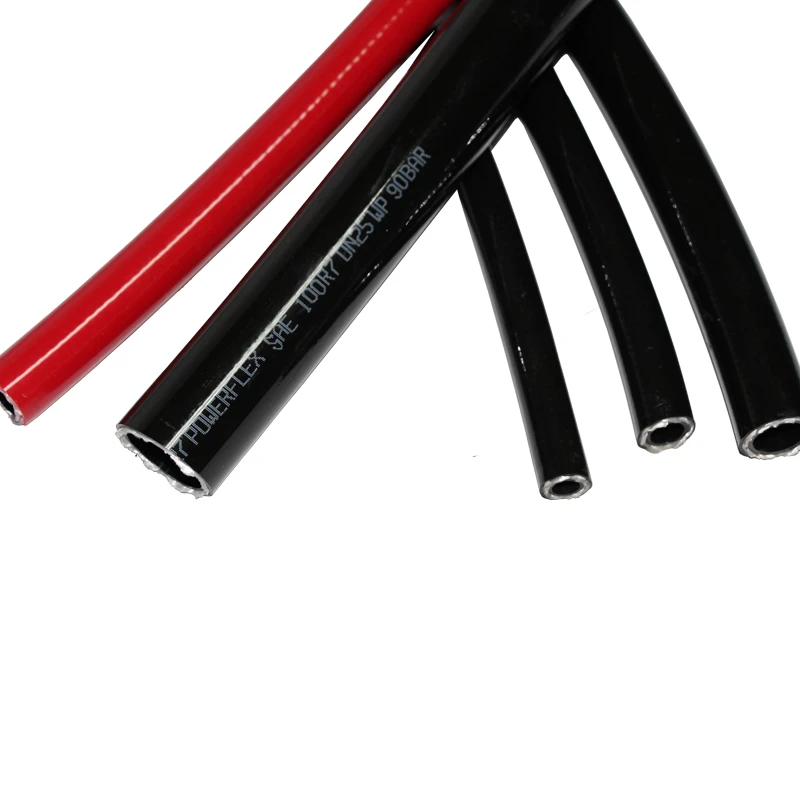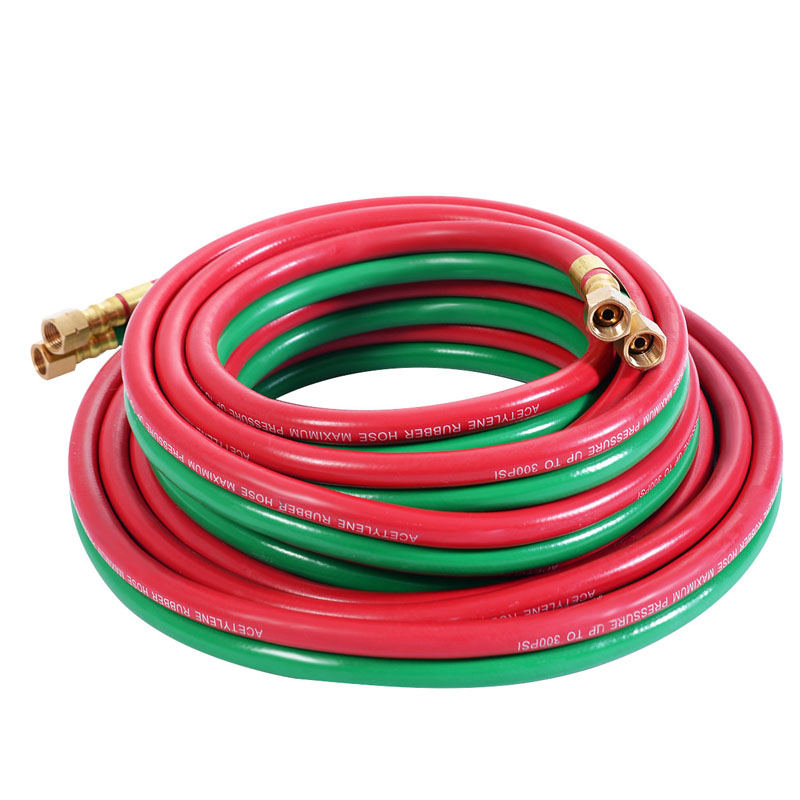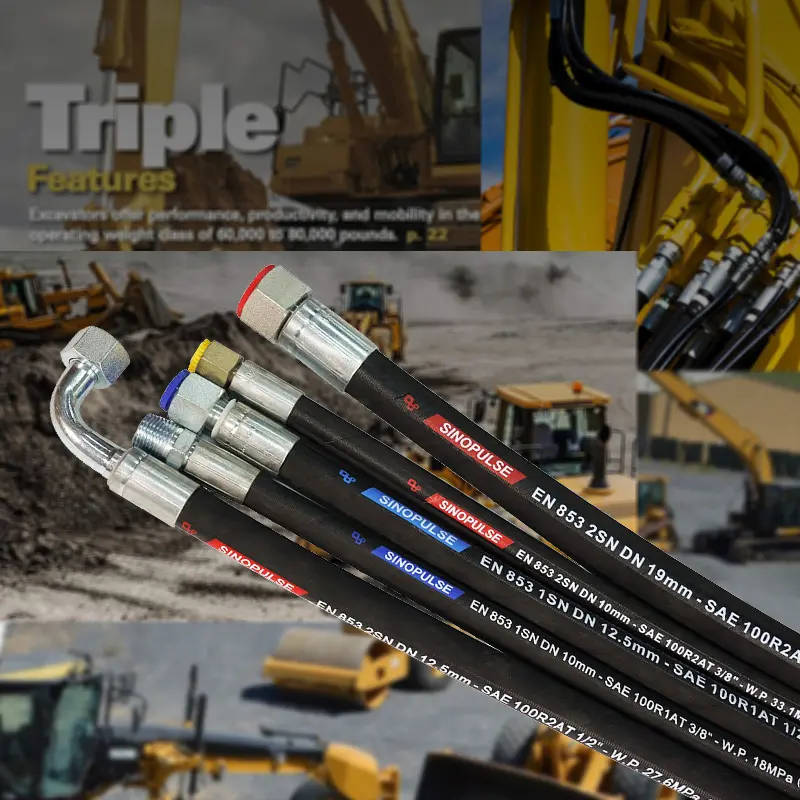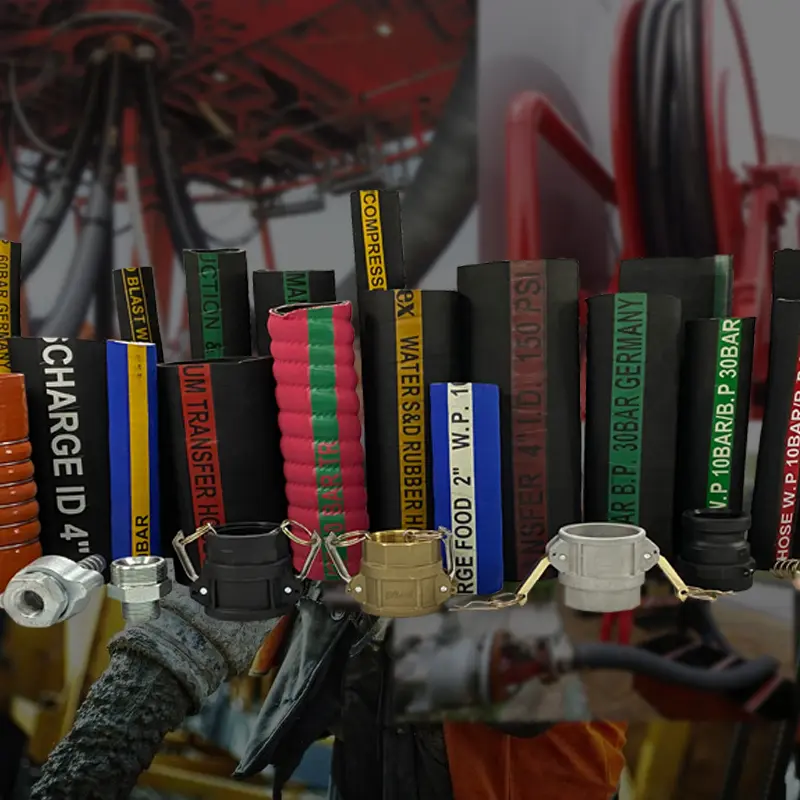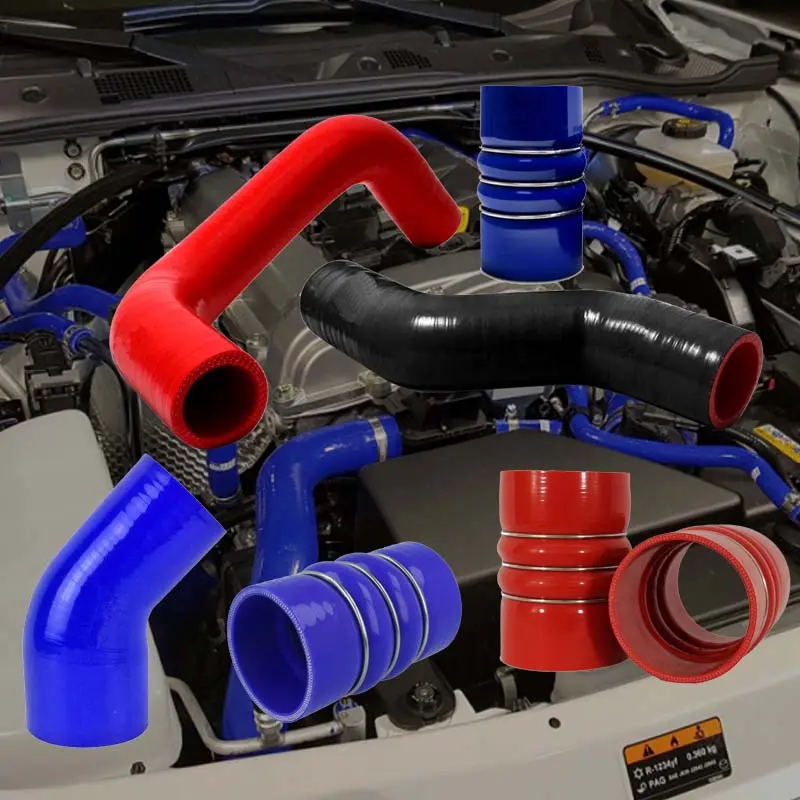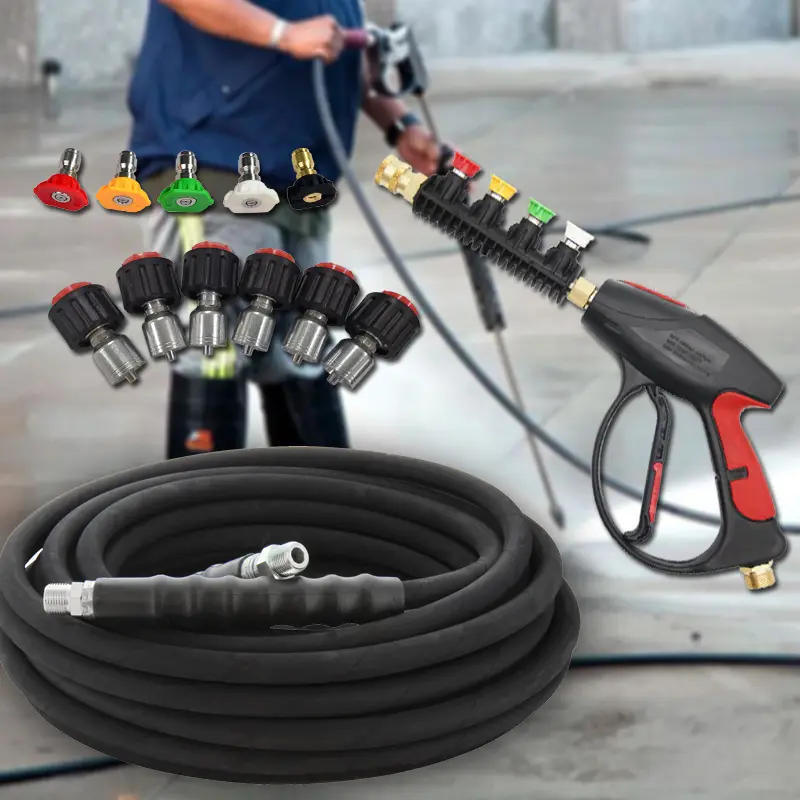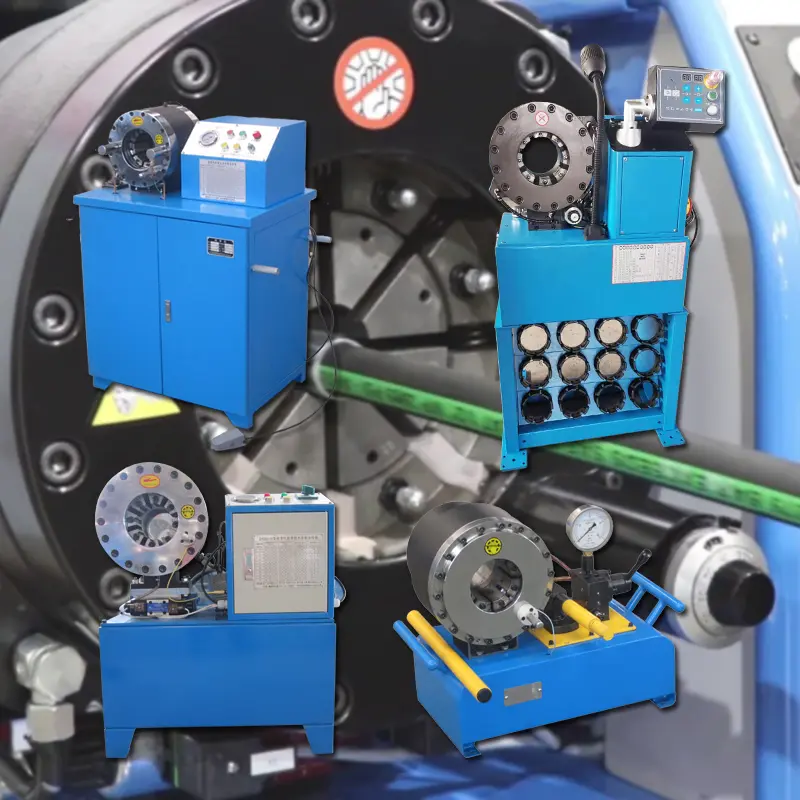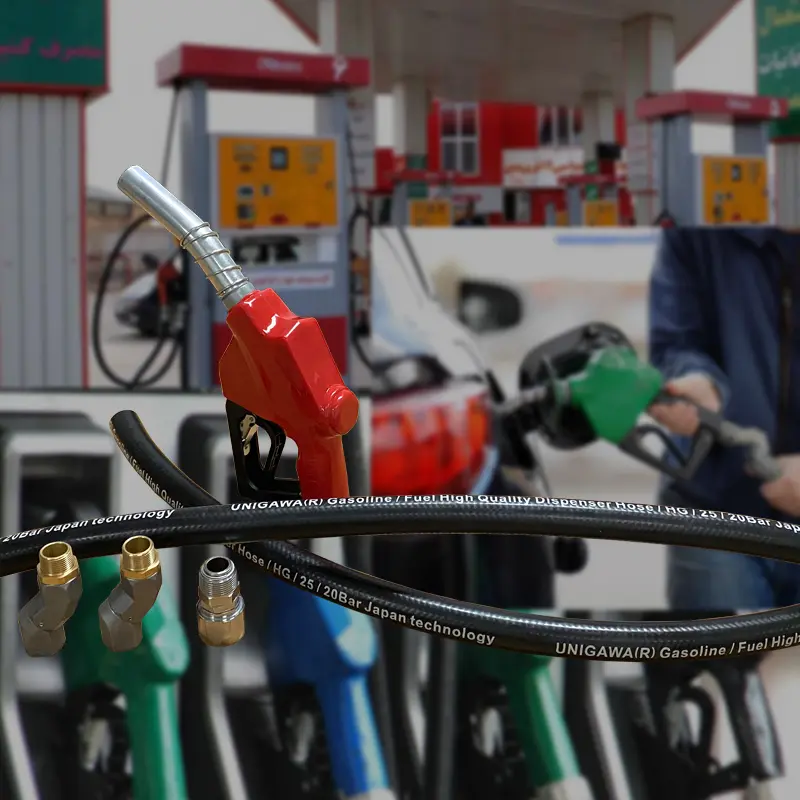Understanding SAE 100 R6 Hose: A Core Component in Modern Hydraulics
In the intricate world of hydraulic systems, the selection of appropriate hose technology is paramount for ensuring operational efficiency, safety, and longevity. Among the myriad options available, the sae 100 r6 hose stands out as a foundational component, specifically engineered for low-pressure hydraulic applications where flexibility and durability are critical. Unlike its higher-pressure counterparts such as the multi-braid SAE 100R1 or 100R2 hoses, the R6 standard focuses on providing robust performance with a single fiber braid, making it ideal for return lines, drain lines, and suction applications in diverse industrial and mobile equipment. Its construction typically involves an inner tube made from oil-resistant synthetic rubber, reinforced with one braid of suitable fiber, and an oil and weather-resistant synthetic rubber cover. This design ensures excellent resistance to petroleum-based hydraulic fluids, lubricating oils, and non-flammable hydraulic fluids, while also offering commendable resistance to abrasion and environmental degradation. The importance of selecting a genuine sae 100 r6 hose cannot be overstated, as counterfeit or substandard products can lead to premature failure, costly downtime, and potential safety hazards. This article delves deep into the technical specifications, manufacturing precision, critical applications, and the inherent advantages of this essential hydraulic component, providing a comprehensive guide for engineers, procurement specialists, and maintenance professionals seeking reliable and high-performance solutions. We will explore how adherence to international standards, rigorous testing, and advanced material science contribute to the superior quality and operational integrity of these hoses, underpinning their widespread adoption across various sectors including agriculture, construction, material handling, and general industrial machinery. The versatility of the sae 100 r6 hose is further highlighted by its compatibility with a broad range of operating temperatures and fluid types, making it a highly adaptable choice for complex hydraulic circuits requiring dependable fluid conveyance. This detailed analysis aims to illuminate the technical nuances and practical benefits, empowering informed decision-making in hydraulic system design and maintenance.
Technical Specifications & Industry Compliance: The Core of SAE 100 R6 Performance
The performance of any hydraulic hose is fundamentally dictated by its adherence to stringent technical specifications and industry standards, and the sae 100 r6 hose is no exception. This standard, outlined in SAE J517, defines specific parameters for dimensions, pressure ratings, temperature ranges, and material compatibility, ensuring interoperability and safety across different applications. For instance, the working pressure for an sae 100 r6 hose typically ranges from 35 Bar (500 PSI) for larger diameters up to 50 Bar (725 PSI) for smaller sizes, with corresponding burst pressures being significantly higher, usually four times the maximum working pressure, providing a critical safety margin. This design contrasts with standards like `sae 100r3 hose`, which, while also a low-pressure hose, often features two textile braids and may offer slightly higher pressure capabilities for certain applications, highlighting the specific niche of the R6 standard for very flexible, low-pressure return lines. Temperature compatibility is another crucial factor; a standard sae 100 r6 hose is generally rated for operating temperatures from -40°C to +100°C (-40°F to +212°F) for petroleum-based hydraulic fluids, with specific limitations for water-based or synthetic fluids. Material composition, specifically the type of synthetic rubber for both inner tube and cover, is chosen for its excellent chemical resistance to hydraulic fluids and environmental resilience against ozone, UV radiation, and abrasion. For specialized applications such as conveying certain types of fuel, a modified `sae 100 r6 fuel hose` might be specified, featuring different inner tube compounds tailored for fuel compatibility while maintaining the single fiber braid structure. Certifications from bodies like ISO (e.g., ISO 1436 for rubber hoses) and MSHA (Mine Safety and Health Administration) for flame resistance are vital indicators of a manufacturer's commitment to quality and safety, particularly in demanding environments. Regular testing, including impulse testing to simulate cyclic pressure changes and bursting pressure tests, ensures that each batch of hoses meets or exceeds these rigorous standards, confirming their reliability and extended service life in demanding operational conditions.
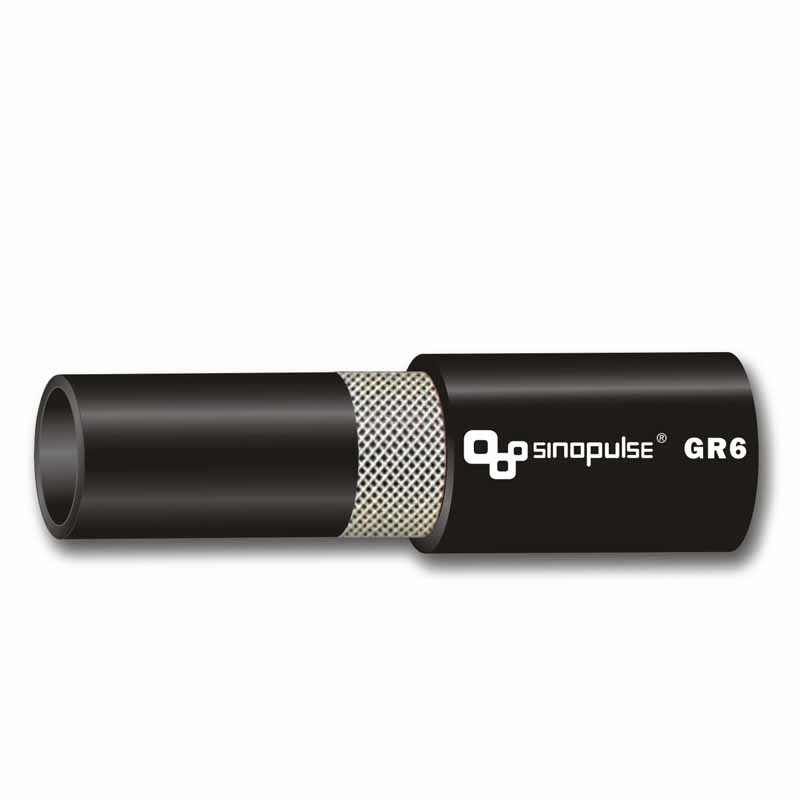
Key Parameters for SAE 100 R6 Hose
Precision Manufacturing & Uncompromising Quality Assurance for SAE 100 R6 Hoses
The consistent performance and longevity of an sae 100 r6 hose are directly attributable to a meticulous manufacturing process that integrates advanced material science with precision engineering and stringent quality control. The journey begins with the extrusion of the inner tube, typically composed of a specially formulated oil-resistant synthetic rubber like Nitrile (NBR) or Chloroprene (CR), ensuring seamless fluid conveyance and chemical compatibility. This inner layer is critical for preventing permeation and resisting the corrosive effects of various hydraulic fluids, including petroleum-based oils, water-glycol solutions, and synthetic esters. Following extrusion, the reinforcement layer is applied, which, for the sae 100 r6 hose, involves a single braid of high-strength textile fiber. This braiding process, often executed with advanced automated machinery, ensures uniform tension and consistent angle of the fibers, which is paramount for achieving the specified working and burst pressures while maintaining flexibility. The final stage involves the extrusion of the outer cover, typically a weather and abrasion-resistant synthetic rubber compound, designed to protect the internal components from environmental degradation, ozone exposure, and physical damage, enhancing the hose's overall service life. Throughout each stage, rigorous in-process inspections are conducted, focusing on dimensional accuracy, material consistency, and bond integrity between layers. Post-production, every batch undergoes comprehensive testing, including hydrostatic proof tests to confirm pressure ratings, impulse tests to simulate millions of pressure cycles mimicking real-world conditions, and cold flexibility tests to ensure performance in low-temperature environments. Adherence to international quality management systems such as ISO 9001 is a baseline, with leading manufacturers also obtaining specific product certifications like MSHA (Mine Safety and Health Administration) for flame resistance, ensuring suitability for underground mining applications or environments where fire safety is paramount. This multi-layered approach to manufacturing and quality assurance guarantees that each length of sae 100 r6 hose not only meets but often exceeds industry benchmarks, providing unparalleled reliability and peace of mind for mission-critical hydraulic systems.
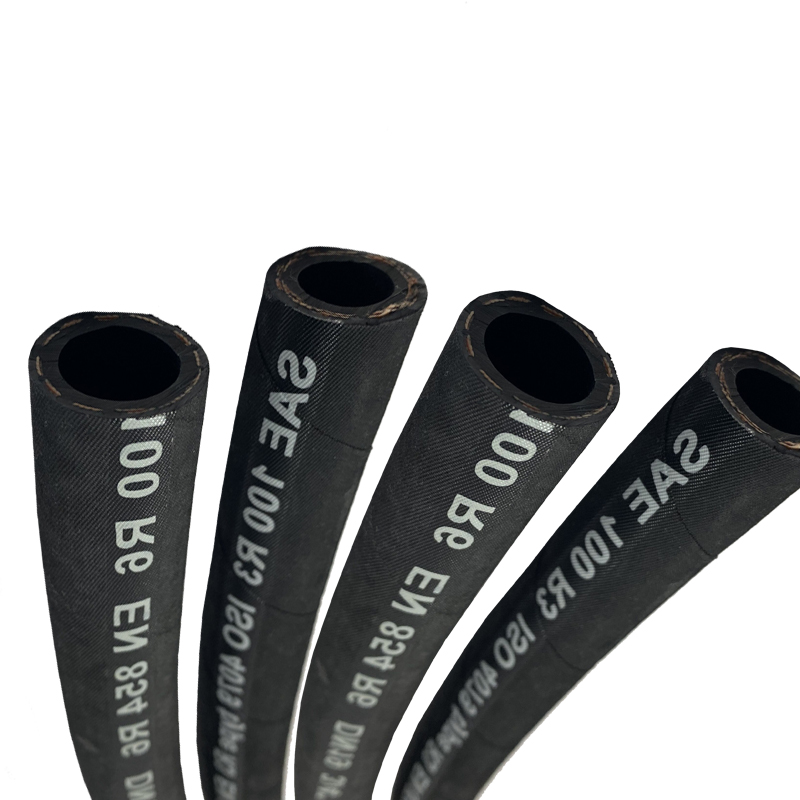
Diverse Applications & Inherent Advantages of SAE 100 R6 Hose in Industrial Settings
The intrinsic design characteristics of the sae 100 r6 hose lend themselves to a broad spectrum of low-pressure hydraulic applications across various industries, where its superior flexibility and resilience are highly valued. Commonly found as return lines in hydraulic circuits, drain lines, or suction lines in a wide array of mobile and industrial equipment, its role is pivotal in ensuring the smooth and efficient flow of hydraulic fluids back to the reservoir, or from the reservoir to the pump, without incurring excessive pressure drops. In the agricultural sector, for instance, these hoses are extensively used in tractors, harvesters, and irrigation systems for non-pressurized fluid transfer, offering excellent resistance to agricultural chemicals and environmental exposure. Construction machinery, including excavators, bulldozers, and loaders, utilize sae 100 r6 hose for auxiliary lines where low pressure is sufficient and routing flexibility is key. Beyond traditional hydraulic functions, specialized variants like the `sae 100 r6 fuel hose` find critical applications in fuel transfer systems for internal combustion engines, exhibiting specific chemical resistances tailored for diesel, gasoline, or biodiesel, thereby preventing degradation and ensuring fuel system integrity. Compared to products like `100r3 hose` or `sae 100r3` which, while also textile braided, may target slightly different pressure ranges or bend radius characteristics, the R6 hose excels where maximum flexibility and compactness are required without compromising integrity under low pressure. Its primary advantages include exceptional flexibility, facilitating easier installation in confined spaces and reducing kinking risks; significant weight reduction compared to steel-braided hoses, improving equipment maneuverability and fuel efficiency; and superior resistance to abrasion and environmental factors, extending its service life in harsh conditions. These combined attributes contribute to reduced maintenance costs, minimized downtime, and enhanced operational efficiency for industrial users, making the sae 100 r6 hose an economically viable and technically superior choice for appropriate low-pressure fluid conveyance tasks in diverse B2B scenarios, from factory automation to heavy-duty off-road vehicles.

Custom Solutions, Manufacturer Commitment, & Trustworthiness: Your Partner in Hydraulic Excellence
In the complex landscape of B2B procurement, choosing a reliable partner for your hydraulic hose needs extends beyond mere product specifications; it encompasses a manufacturer's commitment to custom solutions, technical support, and unwavering trustworthiness. For businesses requiring specialized applications beyond the standard specifications of an sae 100 r6 hose, reputable manufacturers offer comprehensive customization services, ranging from specific length requirements and factory-installed fittings to unique cover materials for extreme abrasion resistance or color coding for system identification. This bespoke approach ensures that even the most niche operational demands are met with precision-engineered solutions, maximizing system performance and minimizing potential compatibility issues. A critical aspect of a trustworthy manufacturer is their robust quality assurance program, including not only adherence to SAE J517 100R6 but also internal quality benchmarks that often surpass industry minimums. This commitment is often reflected in long-term partnerships with leading OEMs and end-users, built on a track record of consistent product performance and exceptional after-sales support. Companies like Hydraulichoseplus.com pride themselves on their decades of experience in the fluid conveyance industry, offering certified products that undergo rigorous testing protocols, guaranteeing a superior lifespan and reliability. Furthermore, a transparent delivery cycle and comprehensive warranty policies, typically ranging from 1 to 5 years against manufacturing defects, provide businesses with confidence in their investment. Dedicated customer support, including technical consultations, troubleshooting assistance, and efficient order fulfillment, ensures that clients receive not just a product, but a complete solution supported by industry experts. Real-world applications consistently demonstrate the value of partnering with experienced manufacturers: for instance, a large agricultural equipment OEM reported a 15% reduction in hose-related breakdowns after switching to a supplier committed to custom-tailored sae 100 r6 hose assemblies, attributing the improvement to enhanced material science and precise fitting integration. This holistic approach, combining product excellence with unparalleled service and support, distinguishes a true industry leader in the hydraulic hose market.
Frequently Asked Questions (FAQ) about SAE 100 R6 Hose
Q1: What is the primary difference between SAE 100 R6 and SAE 100 R3 hoses?
Both SAE 100 R6 and `sae 100r3 hose` standards specify low-pressure hydraulic hoses primarily used for return and suction lines. The key distinction lies in their reinforcement. The sae 100 r6 hose is reinforced with a single textile fiber braid, offering exceptional flexibility and lighter weight, making it ideal for applications requiring tight bends and easy routing in confined spaces. In contrast, the `sae 100r3` (or `100r3 hose`) typically features two textile braids, which generally allows for slightly higher working pressures and greater robustness in specific applications, though at the expense of some flexibility and increased bend radius compared to R6. The choice between them depends on the specific pressure requirements, bend radius needs, and overall system design constraints.
Q2: Can a standard SAE 100 R6 hose be used for fuel transfer?
While the standard sae 100 r6 hose is designed for petroleum-based hydraulic fluids, it is generally NOT recommended for direct fuel transfer applications unless explicitly specified as a `sae 100 r6 fuel hose`. Standard hydraulic hose inner tubes are formulated for hydraulic oil compatibility, which differs from the chemical composition required for various fuels (gasoline, diesel, ethanol blends). Fuel-specific hoses, such as a designated `sae 100 r6 fuel hose`, feature inner tube materials engineered with enhanced chemical resistance to prevent degradation, swelling, or permeation when exposed to fuel, ensuring safety and compliance with fuel system regulations. Always verify the hose's intended application and material compatibility with the fluid being conveyed.
Q3: What factors contribute to the service life of an SAE 100 R6 hose?
The service life of an sae 100 r6 hose is influenced by several critical factors, including proper selection for the application's pressure and temperature range, fluid compatibility, and environmental conditions. Exceeding the hose's rated working pressure or temperature limits, or exposing it to incompatible fluids, will significantly shorten its lifespan. External factors such as abrasion, exposure to ozone, UV radiation, and harsh chemicals also play a major role. Correct installation, ensuring the hose operates within its minimum bend radius and without undue twisting or kinking, is paramount. Regular inspection and maintenance, including visual checks for cracks, bulges, leaks, or cover damage, can help identify potential issues early and prevent catastrophic failures, thereby maximizing the hose's operational lifespan. Adhering to manufacturer guidelines for storage, installation, and usage is essential for achieving the expected durability and performance of any sae 100 r6 hose.
Conclusion: Partnering for Performance with Superior SAE 100 R6 Solutions
The selection of the right hydraulic hose is a critical decision that directly impacts the efficiency, safety, and longevity of hydraulic systems across myriad industrial and mobile applications. As we have explored, the sae 100 r6 hose, with its single fiber braid reinforcement, stands as a highly versatile and dependable solution for low-pressure return, drain, and suction line duties. Its inherent flexibility, excellent resistance to environmental factors and hydraulic fluids, and cost-effectiveness make it an indispensable component for engineers and procurement specialists. By adhering to rigorous manufacturing standards, undergoing comprehensive quality assurance testing, and providing options for custom solutions, reputable manufacturers ensure that each sae 100 r6 hose delivers consistent, high-level performance. Whether your need is for general industrial machinery, agricultural equipment, or specialized fluid transfer systems (including `sae 100 r6 fuel hose` variants), understanding the technical nuances and operational advantages of this hose is crucial. Partnering with a supplier that embodies expertise, experience, authoritativeness, and trustworthiness, and offers robust customer support and clear warranty commitments, is key to optimizing your hydraulic infrastructure. This strategic choice not only guarantees the availability of high-quality products but also ensures access to valuable technical insights and reliable service, ultimately contributing to reduced operational costs and enhanced system uptime.
References
- SAE International. (2023). SAE J517: Hydraulic Hose. SAE Standards.
- International Organization for Standardization. (2022). ISO 1436: Rubber hoses and hose assemblies - Wire-braid reinforced hydraulic type - Specification. ISO Standards.
- Mine Safety and Health Administration (MSHA). (2023). MSHA 30 CFR Part 7 - Testing, Evaluation, and Approval of Mine Products. U.S. Department of Labor.
- Parker Hannifin Corp. (2021). Hydraulic Hose & Fittings Handbook.
- National Fluid Power Association (NFPA). (2020). Fluid Power Systems & Components: A Technical Manual.
Product Application









